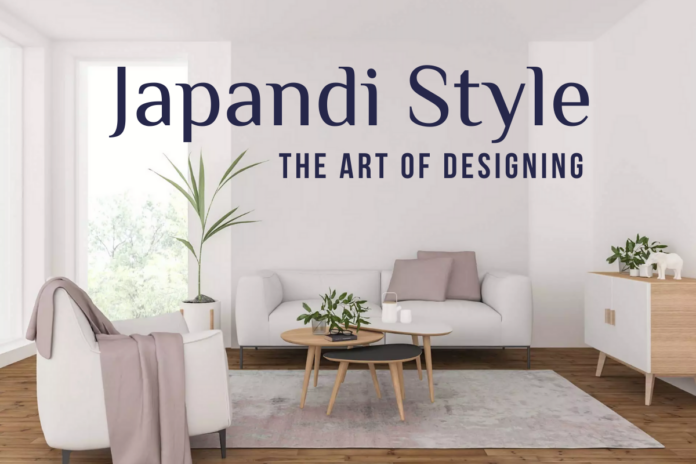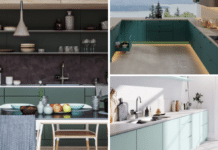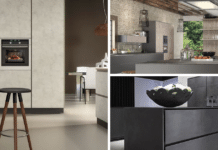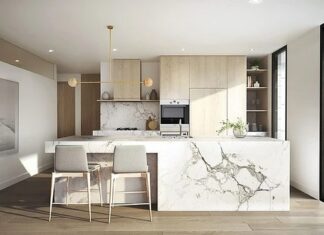Japandi combines two popular interior design origins: a hybrid of Japanese and Scandinavian aesthetic sensibilities. Both are rooted in simplicity, quality over quantity, and embracing nature in your home space.
If you combine Ikea furniture and accessories with Muji’s, you will naturally get Japandi. Yet these styles go so well together that it is hard to tell where one begins and the other ends.
People feature Japandi bedrooms and living rooms, but it has a unique application in the kitchen. In a way, current designers are already decorating this style without even knowing it!
Let’s examine why the Japandi style is a trend, its characteristics, and good examples of this design worldwide.
Features of the Japandi Style
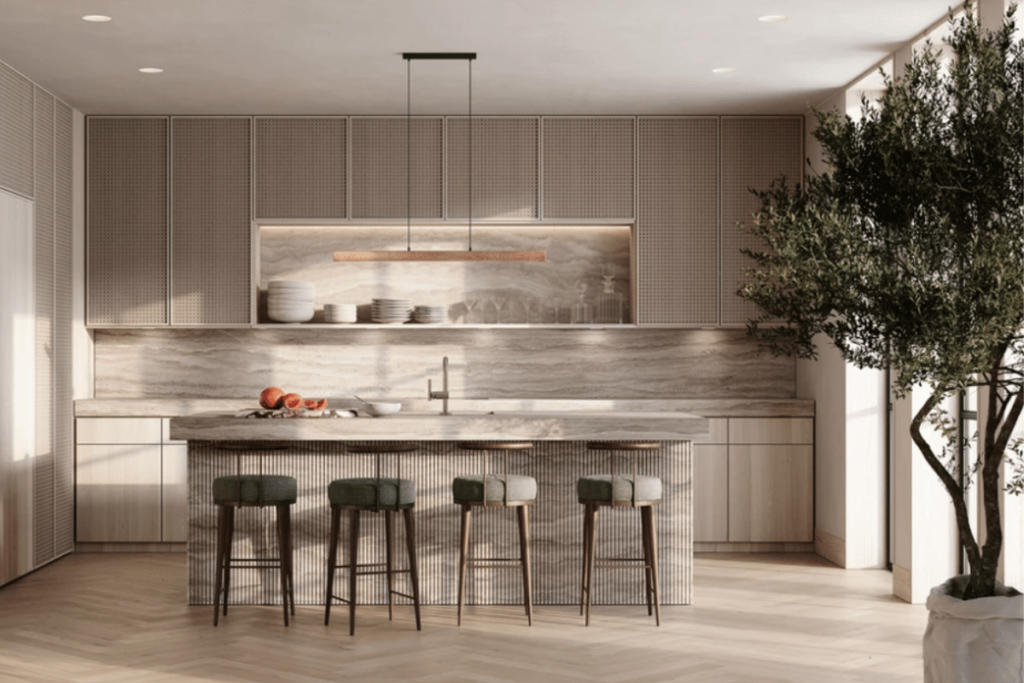
If you look at many of the Japandi styles, it is a natural confluence of a few recent trends existing at once.
Japandi characteristics include the following.
Embracing Nature for What It Is
Current trends embrace more colors and textures found in nature. Rooms display classic earthy materials like wood and stone with natural surfaces rather than painted-over appearances.
Using natural materials extends handcrafted décor like rustic vases and linen curtains. “Humble materials” like jute, terra cotta, concrete, and reclaimed wood are also seen in this trend.
Quality Over Quantity
Rather than abundant curated items, a couple of strong signature items create a more significant impression.
For example, two plants with interesting, different shapes instead of six plants with the same blooms create a more significant impression.
With art, a bold sculptural piece on the wall will have a stronger impact in isolation than several framed paintings. Japanese and Scandinavian aesthetics embrace minimalism, creating clean living spaces in your home.
Playing with Visual Contrasts
Two-tone cabinetry and two-tone kitchens are still “in,” having been popular since last year. The two tones usually contrast in dark and light, like the popular combination of cream and navy blue.
While all-black kitchens are trending, an alternative is adding light accents to emphasize darker pieces in the room.
This variant distinguishes Japandi from traditional Scandinavian design; Scandinavian prefers whites and neutrals.
The uniformity of lighter and muted colors is Scandinavian; the contrasting look defines Japandi. This design will benefit your monochromatic ovens and refrigerators, whether black or white.
Muted Hues and Neutrals
While several examples look mostly white, black, brown, and grey, you can still have some color. Dusty rose and sage green are popular colors this year and work within the Japandi style.
Colors are meant to be sedate and not overstimulating, so avoid saturated or vivid hues that immediately draw the eye. If you notice the tone before the design in the space, it may be too strong in the Japandi aesthetic.
Emphasis on Natural Light
Japandi prefers natural light when it can highlight the room’s features. This usually means the interior is next to a window, and the bigger the window, the better.
In the evening, lighting that imitates candlelight is favored; the soft glow is comforting and warm to your spaces.
Comfort is Key
This facet of Japandi comes specifically from the Scandinavian side, which applies to the feel of the room.
Comfort is also a prominent feature in another interior trend, hygge, which is described as “staying cozy and feeling at ease.”
But how would you make a kitchen comfortable or warm? If you have bar stools for your island, you can add plushness to your seat or chair back.
Appetizing scented candles can add to the hominess of the room when you are not cooking.
Beauty in Imperfection
This detail of Japandi comes from the Japanese aesthetic of wabi-sabi, which is based on Zen philosophy.
Wabi-sabi appreciates elements such as age, which gives things character, asymmetry, and modesty, including that of raw craftsmanship.
What areas of a kitchen can show this? Creative backsplashes are very on-trend, and it’s an excellent place to add textured stone or nature motifs in the kitchen.
Transitional Style
In the past year, transitional styles have been incorporating classic and contemporary elements. Japandi looks timeless, not because it’s traditional but because it’s hard to pinpoint the look of a specific period.
Even though wabi-sabi is centuries old and Scandinavian design emerged in the 1930s, you cannot call this style “retro.”
Retro implies a specific imitative style from a defined period, and the hybridization makes this feel fresh.
What are Good Examples of This Style
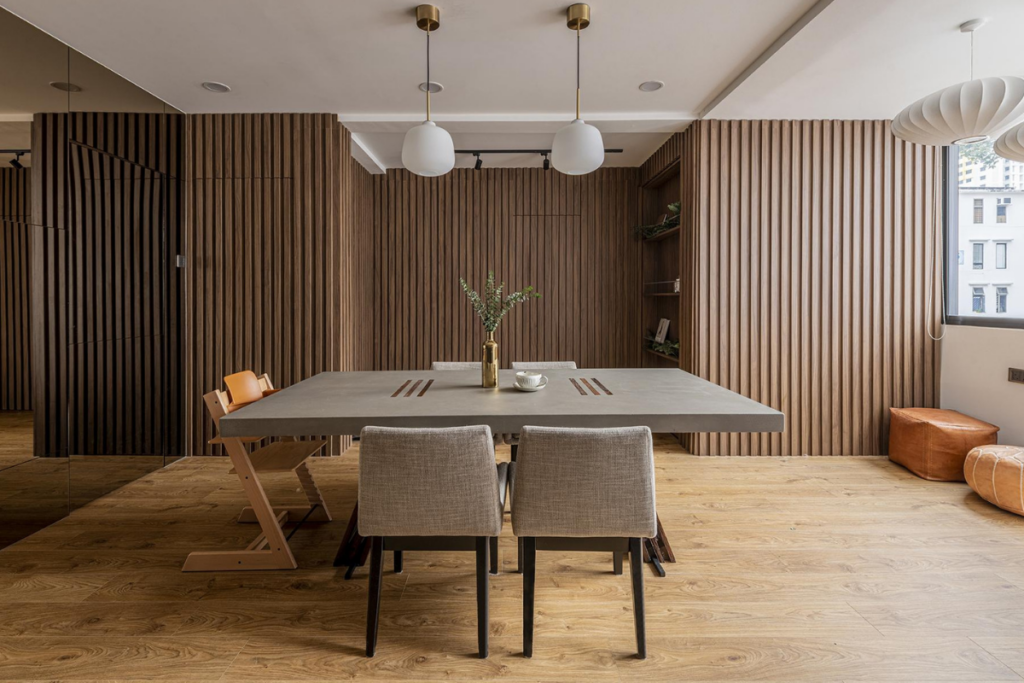
The interesting challenge of decorating with the Japandi style is combining two styles. People looking for a specific example should probably look at a few different rooms rather than a single interior.
Let’s deconstruct the elements:
- High contrast between light (the white space) and dark (the wood brown and charcoal gray)
- Minimalist décor elements such as the sculptural chandelier and the wood duck centerpieces on the dining table
- Natural textures are visible, like the grain on the dark cabinet counters and even the gray stone brick wall
- Use of muted or neutrals in the room; the design stands out before you notice the colors
These are the elements from the Japandi style in this interior:
- High contrast between the light and dark in the space
- The decorative elements are the plants, which are artistic and embrace nature. Notice that all the plants in the room are different shapes, and the plant holder is made of organic and humble materials
- The dark wood of the bathroom vanity has a grain texture, and the style is a simple shape, not heavily ornate.
- Patterns in this room are geometric and don’t overpower the look of the entire interior
- None of the colors in this space are overwhelming. Even the green in the plants fits well into the overall design scheme.
- There is more use of color, yet none of the hues are vivid enough to dominate the eye.
- Many applications of natural textures, including the wall and decorative cabinet
- Lots of comfortable materials, including the soft-looking couches and the carpet
- The decorative items are also functional, like the tea set and the soft brush broom
- Large windows bring in natural light to illuminate the space
Should You Convert to Japandi Style
Japandi is more than a mixture of two styles. Decorating in this fashion feels like an art form.
As a style that transforms the flow of the home and other rooms, it is up to the individual. A Japandi-style home will prioritize function and simplicity over quantity.

